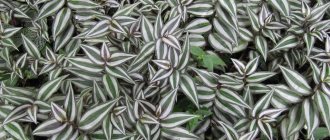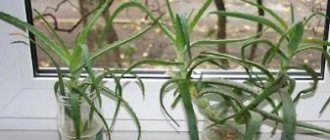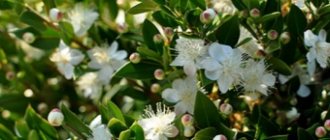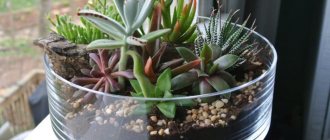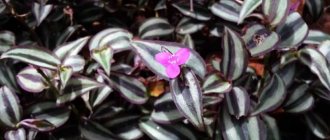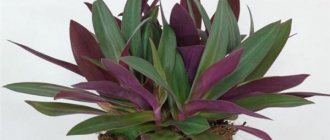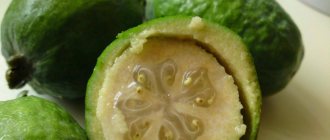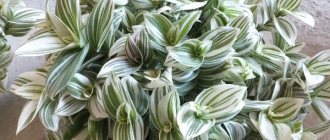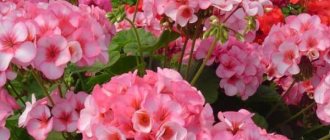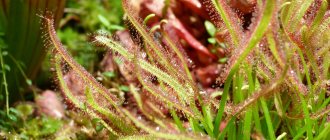Possible diseases and pests
The most common pests of this flower are aphids, scale insects and spider mites.
As a rule, these pests settle on both sides of the leaves. The leaves lose their color and gradually die. Aphids most often attack young stems and leaves. To avoid this problem, it is recommended to regularly inspect the plant for pests. If you see that the Tradescantia leaves are not very damaged, it is recommended to wash them with soap and water. If this method does not help, then you need to apply an insecticide.
Other problems:
- If there are few leaves on the plant, this indicates a lack of light, water or fertilizing.
- If all the leaves of variegated Tradescantia species are the same color, this indicates a lack of light.
- If the leaves of the plant become limp, yellow, with spots, then this indicates a lack of moisture.
- If the tips of the leaves begin to dry out and turn brown, this indicates that the air in the room is too dry.
Problems growing?
Although caring for the Tradescantia plant is not difficult, novice gardeners often encounter problems.
photo by the author
- If Tradescantia has limp leaves...
Typically, the leaves of the plant lose turgor and turn pale due to lack of moisture. Prolonged drought harms this moisture-loving flower! Water it as the top layer of soil dries out. Do not forget that the root system is close to the surface, so overdrying is dangerous for the roots.
- If Tradescantia leaves turn yellow...
Regularly inspect the flower for mites and scale insects, which suck the sap of the plant, causing the death of the leaves. Tradescantia leaves often dry out in conditions of low air humidity. Spray the flower with a fine spray bottle more often! Hairy varieties do not like moisture. It is enough to spray the air around them to increase the humidity.
- If Tradescantia leaves lose color...
Species that are variegated in color may lose their brightness in a shaded area. After all, sunlight is needed to form pigment in leaf plates! The most unpretentious variety is the white-flowered one; it can be grown even in partial shade.
- If Tradescantia does not grow leaves...
Stopping the growth of new leaves may be a consequence of a lack of light and nutrition. Usually, with good lighting and periodic feeding, the plant intensively grows its crown. However, if your pet is no longer young, it’s time to pinch her! After all, old branches are unlikely to be covered with new foliage without pruning. (Read above in the paragraph “reproduction and transplantation”).
Important! Tradescantia is very fond of pests (especially spider mites and scale insects), so if you have not found the answer to your question, use the online diagnostics of diseases and pests.
Now indoor Tradescantia, the care of which is described in this article, will take its place in your collection.
Support our site, share the link on social networks. Thank you!
Tradescantia is an indoor plant that requires a minimum of attention, but at the same time is a spectacular interior decoration. Thanks to the combination of these qualities, the plant has gained such popularity among lovers of indoor flowers.
You will learn further in the article whether it is possible to keep a Tradescantia flower at home.
See below for a photo of an indoor Tradescantia flower:
How care errors manifest themselves
When no pests are found, and the plant withers every day, the cause is improper care. Frequent mistakes in caring for Tradescantia and their consequences:
- Exposure of shoots, falling leaves - lack of light, mineral supplements and moisture. Move the pot to a well-lit place, additionally add appropriate fertilizer and water it without waiting for a crust to form on the surface.
- Loss of rich color in foliage due to excessive exposure to shade. Change the location of the flower pot.
- Withering and yellowing of leaves with the appearance of yellow spotting is not enough watering. Normalize the regime.
- Drying and darkening of the tips of the leaves is due to dry air in the room. Place a pan of water next to it or install a humidifier in the room.
When the primary sources causing the plant’s ill health are eliminated, everything returns to normal.
The value of Tradescantia among gardeners, especially beginners, is explained by its ease of care. Even with irregular watering, the plant continues to grow successfully. But if you want to get a large-scale branched flower with an exquisitely cascading cascade of stems, you will need to put in a little effort.
Feeding and fertilizing the flower
Green Tradescantia and variegated ones are fertilized in different ways:
- green: fertilizing is given in spring and summer every 7-10 days, alternating mineral and organic fertilizers; in the fall they reduce the amount of fertilizing, and given that most tradescantia continue to grow in winter, fertilizers are applied then, but their amount is reduced, this is done after 3-4 weeks;
- variegated: they can only be watered with mineral fertilizers; in winter, the growth of variegated forms slows down significantly, so fertilizing is given in half the dose no more than once a month.
Reproduction methods
The best time to propagate Tradescantia is spring. You can do this at other times of the year; it is not recommended only in winter. Do not forget to always take into account one subtlety: these plants have very fragile, brittle stems, be extremely careful when working with them. Tradescantia can be propagated by cuttings, rooting layering, dividing bushes and seeds.
Cuttings
The simplest and most popular way. For cuttings, choose strong mature shoots and cut cuttings up to 15 cm long. The cuts are made under the nodes so that each of the cuttings ends up with buds. The cuttings are dipped in water to form roots.
After about 10 days, small roots (about 5 cm) grow. Rooted cuttings should be planted in pots, maybe several in each. To enhance the branching of the bush, shortening the stems is practiced. The correct composition of the soil mixture is the key to good development of cuttings. It should include compost soil, humus and river sand.
Some gardeners plant cuttings directly into pots with substrate, without rooting in water. At a temperature of approximately +20 degrees and diffused lighting, the roots will successfully grow in the substrate, and shoots with numerous branches and beautiful foliage will form from the buds on the cuttings. With full compliance with agricultural technology, in 1–1.5 months a completely decorative bush will grow.
Rooting cuttings
On the hanging branches of Tradescantia there are always barely noticeable rudiments of roots. If the shoot “reaches” the soil, it immediately clings to the ground, which is successfully used during propagation. A pot with a moist substrate is placed next to the main plant, one of the lower shoots is bent to it and secured to the ground with a pin. The roots almost immediately begin to grow into the soil, and a new bush is formed.
Dividing the bush
This procedure is carried out in the spring. The plant is dug out of the pot, the roots are cleared of soil and cut into pieces with a sharp garden knife. The cut areas are sprinkled with wood ash (or activated carbon) and placed in prepared containers with substrate.
Seeds
This is the most time-consuming method. If Tradescantia is propagated by seeds, then from the moment of sowing the seeds to an adult bush it will take 2-3 years. Before planting, the seeds are soaked in a solution of a growth stimulator for several hours, then they are sown at a shallow depth in a container with a moistened soil mixture. The crops are covered with transparent material and placed in a room with a temperature within 20 degrees above zero.
While waiting for the seedlings to appear, they carefully monitor the conditions (temperature, humidity) and systematically ventilate the improvised “greenhouse”. With the emergence of seedlings, the shelter is removed. When the seedlings have 3-4 leaves, they can be transplanted into separate bowls or flowerpots.
Answers to readers' questions
What is the lifespan of a plant?
Tradescantia is not kept for more than 2-3 years. It loses its decorative appearance, many branches become bare, so a new plant is grown regularly at these intervals.
Is this flower poisonous?
Most types of Tradescantia are not poisonous. Many lovers of decorative fish place pots on stands above the aquarium so that the branches of Tradescantia descend into the water, and the fish happily pluck the leaves that are in the water.
Tradescantia pallidum contains a small amount of toxic substances. It may cause redness of the skin.
Why do the leaves turn yellow (dry)?
The main reason for this phenomenon is drying out of the soil, which Tradescantia cannot tolerate. Stagnation of water in the pot is also possible. In reo, this may be caused by watering with cold water.
How does the plant overwinter?
Tradescantia overwinters well under normal room conditions, but it must be kept away from heating devices and regular spraying must be continued, limiting watering, but not allowing the soil to dry out. If there is a glassed-in loggia suitable for wintering plants, then it is better to place the geranium there and spray it only once a week.
Diseases and pests
Why do Tradescantia leaves dry out, their number decrease, and the stems wither and turn yellow? These plant diseases are associated primarily with violation of maintenance rules. If you notice any signs of ill health, then it is necessary to eliminate the care problem:
- A decrease in the number of leaves or their coloring in one solid color indicates a lack of illumination;
- Lethargy, yellowness of stems and leaves are a signal of a lack of moisture in the soil;
- Tradescantia leaves dry out when there is insufficient air humidity;
Houseplants Tradescantia are affected by aphids, spider mites, and scale insects. These insects breed first on the underside of the leaves, gradually covering the entire leaf blade. The plant begins to wither and may gradually die.
Violation of living conditions contributes to the appearance of pests, as well as the development of diseases. For example, spider mites multiply in the presence of dry air.
At the first signs of pests, it is necessary to wash the Tradescantia with warm water and a solution of laundry soap. Then you should treat it with an insecticide. On our website we have prepared for you interesting and informative articles about Tradescantia. You can learn about the very spectacular and easy-to-care vine “Zebrina,” which is especially popular, in this material.
Buy this interesting plant for your collection of house flowers. With minimal care, Tradescantia will decorate the interior of your home and have a beneficial effect on its atmosphere.
How to feed Tradescantia
It is necessary to feed the flower during the growth period, from early spring to autumn. It is recommended to alternately use organic and mineral fertilizers. You need to apply funds to the soil twice a month. The exception is varieties with variegated leaves. Organic substances are detrimental to their beauty. As a result of their action, the color of the leaf blades becomes simply green.
Watering and fertilizing
To provide Tradescantia with the necessary substances, it is enough to purchase a complex fertilizer for decorative deciduous representatives of the flora at a flower shop. Liquid products are added to the water used for irrigation. In this case, you need to reduce the dose of fertilizer by at least half so as not to harm the flower.
Note! The soil must always be moist before fertilizing, otherwise there is a risk of burning the roots.
Feeding during the flowering period
During flowering, which occurs at the end of summer, Tradescantia continues to be fed. During this period, the appearance of the plant changes. Small flowers appear, usually blue or white. Purple Tradescantia has soft pink buds. They look quite impressive against the background of dark leaves.
Purple
Tradescantia multiflora is distinguished by the appearance of many white flowers. They decorate the hanging stems, and the ampelous Tradescantia resembles an elegant bride.
Fertilizers help replenish the strength and energy spent on the formation of buds.
What should the lighting be like?
Tradescantia grows best on the western and eastern sides. With this arrangement, it receives enough bright light, but in a diffuse form. The plant also feels good near windows on the north side; the south side is not suitable for it, and if you decide to place it on this window, then during hot hours you need to cover the plant from the sun.
Tradescantia with variegated leaves is more demanding of light; if there is not enough light, then the leaves become simply green, and if there is too much, they burn out. The most shade-tolerant is the white-flowered Tradescantia species.
In summer, the plant can be taken out to the balcony or planted in the garden.
Important!
If you decide to plant a plant in the garden or take it out onto the balcony for the summer, then make sure that the Tradescantia is not in direct sunlight and away from drafts.
Tradescantia pot
For a young plant, a container with a diameter of 15-20 cm is considered optimal. If you initially plant the cuttings in large pots, the crop will only grow the root system. You will have to wait a long time for good tillering and flowering.
Every spring (when replanting) the size of the pot increases by 1.5-2 cm in diameter
Choosing land for tradescantia
The flower develops well in nutritious, light soil with neutral acidity. To avoid mistakes, you can buy a ready-made composition. Optimal soil option:
- leaf soil - 2 parts;
- compost soil - 1 part;
- humus – 1 part;
- river sand – 1 part.
Need to know! Self-prepared composition must be disinfected. You can calcine the soil or spill it with a pink solution of manganese.
Reproduction methods
At home, the reo flower can be propagated in several ways, each with advantages and disadvantages.
Cuttings
The main advantage of such propagation is the opportunity to obtain new specimens with all the varietal characteristics of the mother flower.
Cutting is carried out in the spring, when Tradescantia has not yet begun to develop stems and foliage. The cuttings are dipped into a vessel with warm water and kept in this environment until roots appear. This may take 1 to 2 weeks. During this time, the water should be changed periodically.
As soon as roots 4-5 cm long appear on the shoots, they are transplanted into flowerpots using the technology described above.
By shoots
Another successful propagation method is to split the top of the shoot into two parts. Over time, new stems will appear in the split. They are carefully separated from the mother plant in the spring, then planted in a pot with purchased soil.
Young shoots need a stable temperature - within 18-20°C and regular moisture. These conditions will ensure rapid rooting.
By dividing the rhizome
It is usually carried out in two cases - to rejuvenate old flowers or when the roots are rotting.
The plant is first watered, then dug out along with a lump of earth, dipped in a basin of water to wash off the remaining soil. Remove, dry, divide the root system into several parts so that each of them has 2-3 roots and one shoot with two buds. The cut areas are powdered with charcoal, and after drying, the seedlings are planted individually in flowerpots.
Seeds
Usually the seeds are sown in early spring. To do this, use seedling boxes or containers with drainage holes. Expanded clay or pebbles are poured onto the bottom, then a light mixture of peat and sand (1:1) is poured to the top.
You can also sow seeds in peat tablets. They are scattered over the surface of the soil, then sprinkled with a thin layer of soil mixture, irrigated with a spray bottle, and covered with a transparent film or glass. Place in a warm and well-lit place. After about two weeks, sprouts will appear, then the shelter is removed. After 20 days, the seedlings are planted in separate containers.
Composition of soil for a flower
Tradescantia, although an unpretentious flower, still requires some attention and care. The soil for Tradescantia should be of high quality and loose. It is better to purchase ready-made soil for hanging plants, but you can prepare it at home. You will need leaf, humus, turf soil and sand (2:1:1:1), all this needs to be mixed thoroughly and you can plant Tradescantia.
Important!
If you decide to prepare the soil yourself, then you should first freeze it and then bake it in the oven so that the harmful microorganisms that live there die.
Reproduction methods
Tradescantia propagates quite easily. There are several ways to do this.
Cuttings
Cuttings for planting can be taken from spring to late autumn. In winter, rooting occurs slowly. Apical stems with a length of at least 15 cm are suitable. Place the cuttings in water and keep them at a temperature not lower than +20 degrees. When the roots appear, the plant can be planted in the ground. Tradescantia will be more lush if there are several cuttings in one container.
Dividing the bush
It is better to carry out the procedure before the active growth of shoots begins - in early spring. Carefully remove the plant from the pot along with the soil. Divide the rhizomes without damaging them. You will get several full-fledged divisions, which can be immediately transplanted into new containers with a suitable substrate.
Seeds
This method is rarely used, but it is no less effective than cuttings and dividing the bush. Seeds are sown in early spring in a moistened substrate of peat and sand (1:1). They are scattered over the surface, lightly covered with substrate. Cover the container with film. Keep at a constant temperature - about +20°C and high humidity. The first shoots will appear on average after 2 weeks. Seedlings can be planted in separate pots after 2-3 true leaves appear.
Garden tradescantia - what kind of plant is it, how to plant it correctly
The plant in question is a bush flower. It usually reaches about half a meter in height. The plant received this romantic name thanks to the name of the biologist who first introduced European countries to this native of Virginia.
Externally, the bush looks very attractive. It has long, pointed green leaves with thin longitudinal grooves. And the flowers, of which there are quite a lot, have inflorescences consisting of three rounded petals. The shade of the petals varies from pink to purple. Tradescantia is notable for the fact that it blooms from May to September. Moreover, the blooming phase of one flower is short-lived, but due to the fact that there are many of them and they do not bloom at the same time, the bush looks presentable for such a long time.
Another advantage of garden tradescantia is that it is perennial. Over time, the bush grows, becoming more magnificent and richer.
- Most often, the plant is propagated by seeds. If you have collected them, do not delay sowing; freshly collected material germinates faster and better.
- Sowing can be done both in autumn and spring. But if you decide to plant seeds before the winter, then take care of insulating the plantings. First of all, select a suitable container - a wooden box is best suited for this purpose, in the bottom of which you need to drill several holes. After planting, cover the container or place it in a closed greenhouse so the plants can survive the winter cold.
- Garden Tradescantia does not like heavy soil. Therefore, the soil for planting it should be light and loose, as well as supplied with the necessary nutrients. If the soil in your region is poor, mix the soil with a complex fertilizer before planting.
- And don’t forget to thoroughly water the soil, and during growth, do not allow the earthen clod to dry out.
- The calculation of distances when planting is as follows - about one centimeter between seeds of one row, fifteen to twenty centimeters between rows.
How to properly care for garden Tradescantia
So, in order for the plant to please you with its appearance, follow a number of care requirements:
Watering.
Tradescantia is a moisture-loving lady, so it must be supplied with water regularly, especially in hot weather. During the cold season, watering volumes are proportionally reduced. At the same time, you should not water the flower too often, let this procedure be less frequent, but of better quality;
Feeding.
It is carried out during the most critical life periods of the bush. The first time the soil is enriched is at the planting stage, if the original soil is poor in nutrients. Next, fertilizing is added in the spring, during the period of active growth. When the buds begin to form, the fertilizer is applied again;
Loosening.
Garden Tradescantia loves loose soil and does not tolerate weeds nearby, so do not be lazy to remove them in a timely manner and loosen the soil around the base of the bush;
Insulation.
The flower needs to be prepared for wintering. To do this, as soon as it fades, you need to cut off the flower stems and then sprinkle the entire bush with peat. On top, gardeners form a “coat” of spruce paws. This insulation will be enough for a successful winter.
Even if care is correct and timely, the first flowers can be expected no earlier than the second year of the plant’s life.
There are three ways to propagate this flower:
- Using seeds.
- By cuttings.
To implement this option, you will need to cut one of the bush cuttings with leaves, and then place it in a container of water at room temperature. As soon as the roots appear, plant the young Tradescantia in a small box with nutritious soil and leave it in a warm room. When the plant grows and gets stronger, it can be planted in open ground.
- Dividing the bush.
The third option is considered the simplest. But when doing this, do not forget that the root system of Tradescantia is extensive, so when digging up a bush, take a good supply at a distance. It is best to propagate the plant in spring or autumn.
Tradescantia propagation
Tradescantia can be grown from seeds, part of a divided root or cuttings.
Cuttings
The easiest way to propagate Tradescantia flowers is by cuttings.
- To do this, just take a young twig and divide it into 15 cm pieces.
- The finished cuttings are stuck into the ground at a distance from each other.
- It just takes a few days and they will take root.
Propagation by seeds
But if seeds are used for propagation, then the process must begin in the spring.
- The seeds are placed in the soil and greenhouse conditions are created with a constant temperature of about 20.
- The soil must be sprayed, the greenhouse must be opened, letting in fresh air, so that there is no excessive dampness.
- The sprouts that appear will bloom only in the third year.
It is better to divide the root when activity begins, in the spring, when new shoots appear.
Signs and superstitions
The Indians used tradescantia in their diet, to relieve stomach pain, and to treat cancer. The juice of this plant promotes wound healing, relieves boils, treats runny nose, sore throat, and diarrhea. An infusion from the aerial part reduces blood sugar levels. In the room in which Tradescantia grows, the air is purified and the level of electromagnetic radiation is reduced.
One of the reasons for the death of this plant may be the development of a cancerous tumor in one of the family members. Tradescantia takes away negative energy, development stops.
Magical properties depend on the variety:
- Bedspread reduces aggression and tension in relationships, activates creativity, protects against curses and witchcraft;
- Zebrina eliminates the negative consequences of envy and the evil eye, but “drives” men out of the house;
- Virginskaya balances the emotional background, relieves tension, enhances the sense of humor, and increases self-confidence;
- Anderson's Tradescantia eliminates conflicts and improves mood.
People who saw Tradescantia in a dream will experience changes in their lives.
According to Feng Shui, tradescantia should be placed in the southern corner of any room. If this is a bedroom, then to increase sexual energy you need to hang 9 plants above the bed.
Varieties with green foliage are not suitable for children's rooms. None of the varieties are suitable for people suffering from allergies, skin and liver diseases. Zebrina is best placed on window sills or at the entrance.
Tradescantia is not demanding to care for at home, although it is one of the plants that beneficially complements any interior. If you use several varieties, you can create original compositions not only in the garden, but also in flower pots hung in living spaces. Whether to believe in omens or not, everyone decides for themselves. However, it is advisable to take them into account before breeding any indoor plant.
Extreme temperatures
One of the undoubted advantages of Tradescantia of all types and varieties is the ability to grow equally well in warm living rooms and in cool rooms. They adapt to different temperature conditions so well that inappropriate temperatures are almost impossible for them.
The only factor that can lead to severe deformation and damage to the bushes is a drop in temperature significantly below 10 degrees Celsius. In all other cases, even in hot weather, severe wilting is rarely provoked by temperatures.
Description of Tradescantia
Tradescantia (lat. Tradescantia) belongs to the commelinaceae family and includes up to 30 species. The homeland of Tradescantia is the temperate and tropical zones of America. The name of the genus comes from the gardener John Tradescant, who worked for King Charles I of England and was the first to describe this genus of plants. Popular names: Saxifraga and Woman's gossip.
It is a low herbaceous perennial with straight or creeping shoots. The leaves are alternate and, depending on the species, have a lanceolate, elliptical or ovoid shape. Inflorescences grow from the axils of the apical leaves. Tradescantia is one of the most popular hanging plants grown indoors. Pinching helps make the plant more branched and dense. Tradescantia is most often grown in hanging vases or on high shelves to allow the shoots to hang down. Tradescantia blooms with blue-violet and simply blue flowers, even in rooms.
The plant is also used in aquariums - it is placed near the aquarium so that the shoots can sink into the water, thereby forming a green mat. Tradescantia also has medicinal properties - it neutralizes electromagnetic radiation and purifies the air in the room. If you cut off Tradescantia branches and put them in water, they can last from several months to a year, if you sometimes add fertilizer to the water.
Varieties
Among the enormous species diversity of Tradescantia, several variations should be highlighted:
- Tradescantia zebra-shaped. This modification is rightfully considered one of the most popular. Most people know it under a different name - hanging tradescantia. And it is very justified by its appearance: drooping shoots, small pointed leaves and neat, luxurious purple 3-petal flowers. A characteristic feature of this Tradescantia is the color of the leaves: on the inside they are bloody, and on the outside they are light emerald with a bright silver-grass stripe (hence the name).
- Tradescantia virginiana. The modification became widespread after cultivation by breeders who were shocked by its luxurious, colorful flowering. The plant became the “parent” for many hybrid species and types of Tradescantia. Externally, this species is easy to recognize by its straight, long and strongly pointed leaves, as well as lush umbrella inflorescences of a soft azure hue.
- Tradescantia Anderson. A hybrid produced by combining other types of Tradescantia with Virginia. This variety is considered one of the best for growing in garden plots. The leaves of Anderson's Tradescantia can be not only classic green, but also purple and even lemon in color. The flowers are characterized by many shades of blue, pink, and purple.
- White-flowered Tradescantia. The plant has original pointed leaves, creeping shoots and tiny white flowers.
How to cultivate a flower on the site
Most gardeners grow Tradescantia as an indoor crop. Few people know that a decorative flower can decorate a garden, mixborder, gazebo or terrace.
Breeders have developed several special varieties for outdoor cultivation. In a temperate continental climate, Virginia Tradescantia and the hybrid variety "Anderson" can withstand outdoor cultivation. Perennial frost-resistant crops can be left in open ground for the winter.
The plant is used on the site to protect the house from ill-wishers. There is an opinion that the culture of the Sun can get rid of bad energy, words and thoughts.
It is advisable to plant garden Tradescantia in a group with other crops.
The garden form of Tradescantia has blue petals. The size of the flowers does not exceed two centimeters. The straight, standing bush develops long, pointed leaves.
It must be taken into account that the street form will not be able to support the structure on its own. The plant has non-woody, long, succulent shoots. The plant will fall apart. Therefore, it is advisable to use the flower for planting in mixborders.
Tradescantia goes well with hostas. Dense bushes support an unstable flower. The garden representative can often be found near ponds, in group plantings with ferns, astilbes and daylilies.
Features of caring for Tradescantia
Tradescantia, as an ampelous plant, is usually located in hanging pots. She sends her stems along the walls, decorating the room. Excess water after watering remains in the saucer or tray. After the procedure, approximately 30 minutes later, you need to drain the excess liquid.
Tradescantia hanging
Stagnation of water when growing hanging plants is dangerous. Therefore, it is necessary to use a thick drainage layer and be sure to water the flower after the soil dries.
For ease of humidification, it is better to purchase a watering can with a curved spout.
Even if it seems comfortable in the apartment, and the air is humid, it is worth remembering that the higher you go, the drier it is. Therefore, the plant, when it is located on the wall, may require additional spraying.
Tradescantia: appearance, origin, distribution
In nature, Tradescantia is a perennial herbaceous creeping plant with long straight or branched shoots and oval or elliptical leaves located alternately on the stem. The flowers are mostly inconspicuous, small, white, pink or blue, located in clusters at the top of the shoot or in the axils of the leaves. In decorative floriculture, Tradescantia is valued for the beauty of its foliage, not its flowers. For the first time, botanical characteristics of this plant were given by the gardener of the English King Charles I, John Tradescant, whose name became the basis for the name.
Tradescantia is a perennial herbaceous creeping plant with long shoots
To successfully grow a plant in an indoor culture, you need to know the features of its growth in natural conditions:
- In its homeland, Tradescantia is considered a weed; it prefers swampy, highly moist soils, mainly peat. They are poor in nutrients - therefore, Tradescantia is unpretentious and does not require frequent feeding;
- The ideal climate for the plant is a warm and humid climate;
- The illumination of Tradescantia is not important - it easily tolerates both full shade and bright sunlight;
- As a plant of a tropical climate, in conditions of which it does not have periods of rest, Tradescantia is in the stage of active growth all year round.
Diseases and pests of Tradescantia
In indoor conditions, pests rarely attack Tradescantia, but in the garden it can be parasitized by aphids and slugs. Contact and systemic insecticides will help get rid of them. Almost all Tradescantia diseases occur due to improper care. For example, slow growth or the appearance of yellow spots is due to insufficient moisture, light or nutrients. Untimely pruning leads to baldness and stretching of the stems, and due to improper lighting, some varieties lose their variegated color. If the bush turns yellow, then this is a sure sign that the air in the room is too dry and it’s time to spray. You should also be careful when watering, since stagnation of water leads to the formation of fungi and mold, which will require the use of fungicides to combat. In turn, insufficient watering leads to the leaves drying out and falling off.
Sometimes, if not properly cared for, yellowish spots may appear on Tradescantia.
How to propagate a flower
Tradescantia can be spread quite easily by vegetative means. To do this, use stem cuttings and divide the bush.
You can also spread the plant using seeds. It should be remembered that the varietal characteristics of the parent Tradescantia are not preserved.
Bush divisions are usually carried out from the beginning of March until the onset of autumn. When digging outside or removing from a container, the root system can easily be damaged. Therefore, within a few hours you need to evenly moisten the substrate.
For garden crops, it is advisable to prepare a small shovel. The potted plant is quite easy to remove. The roots of the divisions should be cut to fifteen centimeters. At the same time, it is necessary to trim the above-ground parts of the Tradescantia. Otherwise, the plant may not take root.
A crop planted at the beginning of the season will easily restore its roots during the growing season. For successful propagation in mid-July you will need to shade the plant outside. In indoor conditions, it is advisable to build a mini-greenhouse.
For cuttings, you need to choose a healthy, strong culture. You can carefully tear off the stem with three internodes. After uniformly moistening the substrate, cover the container with a plastic cap. The first roots will appear in 3 weeks. The flower can also be moved into open ground. Small Tradescantia planted outside at the end of August can survive severe frost.
Seed propagation is preferably carried out in early spring. For Tradescantia you need to prepare a mixture of sand and peat. The humidity of the environment can be maintained by spraying. The air temperature should not drop to + 20 degrees. The first inflorescences will appear within three years.
Tradescantia can spread by self-seeding.
Outdoors, the flower can reproduce by self-sowing. It must be taken into account that the characteristics of the parent plant are not preserved.
Beneficial features
Since ancient times, Tradescantia has attracted flower growers not only for its subtle original beauty, but also for its medicinal properties:
- gardeners know it as a hemostatic and healing agent for skin damage;
- if you apply a fresh leaf to the sore spot and make a bandage, the wound will stop bleeding, swelling and bruising will decrease, and minor cuts and scratches will heal quickly;
- It is useful to periodically chew a Tradescantia leaf to prevent gum problems;
- alcohol infusions are used for lotions in the treatment of injuries and for rubbing sore spots;
- Tradescantia decoctions relieve the symptoms of colds, sore throat and acute respiratory viral infections (gargling).
But we should not forget that self-medication is extremely dangerous - preliminary consultation with a specialist is always necessary.
Returning home after a long day of work, you will be happy to relax in an atmosphere of coziness and comfort at the sight of well-groomed plants. If you are seriously interested in growing tradescantia, it will certainly become an indispensable addition to the collection of plants in the interior of your home or garden.
An excellent way to propagate Tradescantia in the video below.
Popular types (varieties)
- Purple Tradescantia: this is the name of the species of netkresia; its leaves are long, slightly pubescent below, and have a purple and lilac color; one of the most undemanding plants, grows quickly; the only thing it needs to be fully provided with is light, otherwise it will stretch out and the leaves will become small;
- reo; popularly called the Boat of Moses, it was recently added to the Tradescantia genus; it is a low plant with purple leaves below and green above, there are plants with striped leaves; reo has a very interesting bract, similar to a boat, hence the popular name, white flowers are located between the bracts;
- zebrafish; or striped Tradescantia is described in some reference books as a separate genus, but is currently considered one of the Tradescantia species; the leaves are brightly striped on the outside and lilac-red on the other, pointed at the ends,
- small-leaved: original Tradescantia with numerous very small leaves having a semicircular shape;
- virginiana: this is a garden Tradescantia; strongly branched, knotty stem; leaves up to 20 cm long, pink-violet flowers, collected in umbrella inflorescences, grown outdoors as a perennial; it blooms profusely, often with blue flowers, less often they are white, flowering lasts about two months;
- motley: one of the most interesting species; very small leaves with pink and white stripes;
- Blossfelda: this is the Tradescantia with the largest leaves, they are oblong or elliptical, pointed at the top, smooth dark green on top and pubescent, with a purple tint below; There are several forms of Tradescantia Blossfeld, the most common is variegata, with wide yellow stripes on the leaves; if there is not enough light or pruning was done incorrectly, the leaves become smooth;
- riverine: the second name is myrtle-leaved, it has creeping branches, the leaves are smooth, on a small petiole, with cream or white stripes in some forms, or green on top and lilac below;
- white-flowered: the most common type of Tradescantia; There are both ovate and lanceolate leaves, small white flowers and appear only in sunny places; Moreover, this species tolerates shading best of all;
- Tradescantia Anderson: grows both indoors and in gardens; There are many shades of flowers, there are double forms, and when grown outdoors it can withstand up to -35 degrees.
Tradescantia: care at home
Despite the unpretentiousness of the culture, in order to grow a beautiful lush flower, it is necessary to provide competent care for Tradescantia. White flowers do not last long, only one day, but due to the large number of buds in the inflorescence, which bloom one after another, the impression of long flowering is created. You won’t be able to see the flowers without proper care.
Tradescantia Fluminensis (riverine)
Temperature and lighting
Tradescantia white-flowered does not require special care, although it can grow in conditions with low temperatures from 6°C. Usually the flower grows both in warm and cool conditions, but the room should not be colder than 10-12°C.
For your information! Tradescantia Fluminensis (riverside) is one of the few plants that likes fresh air and some direct sunlight, but can grow well in partial shade.
Watering and air humidity
Tradescantia requires compliance with watering rules, which vary depending on the time of year, air humidity and room temperature. In summer, especially on hot days, the flower is watered once every 2 days; at room temperature in winter, once a week is enough. The signal for watering is the drying surface of the soil in the pot. The soil must be kept moist, but without stagnant water.
Tradescantia is a tropical plant, but it does not require constant spraying of the leaves, but it grows better in a room with high humidity. In the cold season, when the heating season begins, and, consequently, the air in the room becomes very dry, it is necessary to spray the leaves of the flower a couple of times a day. Tradescantia care in the form of watering is recommended with settled water.
Lighting and location selection
Tradescantia can grow both in a bright place and in a shaded one, although in the first case this will contribute to rapid growth. The choice of the place where the flower will grow should be approached responsibly, especially if you grow variegated Tradescantia. Care and sufficient light will make the color of the leaves more vibrant.
Important! Plants with monochromatic leaves that are green in color, on the contrary, in the sun, losing contrast, become faded, and in the shade they acquire a rich shade
Flower propagation
When growing Tradescantia violet, care and propagation at home is carried out from early spring to late autumn by cuttings or dividing the bush. In winter, due to the very slow germination of roots, propagation of the flower is not recommended. You need to cut off the top of the stem so that the cutting has several good internodes and does not exceed 15 cm in length, then place it in a container with water. After a couple of days, when the roots appear, the plant is transplanted into a pot of suitable volume with specially prepared soil and watered abundantly.
When planting several cuttings in one pot at once, the plant will look more lush
Propagation of Tradescantia small-leaved, care is carried out as follows: take it out of the pot along with a piece of soil and carefully divide the rhizome into several parts, trying not to damage it. Then the plant needs to be planted in a pot with soil prepared in the same way as for cuttings.
Note! Along with cuttings and division, Tradescantia can be propagated by seeds, but this method is only suitable for miniature Tradescantia, garden species
Why do Tradescantia leaves dry out?
No matter how unpretentious this leafy beauty is, problems may still arise when growing it. Most often they relate to the appearance of the plant and are associated with improper care:
- if the leaves begin to turn yellow from the edges to the center, and then dry out completely, this indicates that the leaf blade is burned by direct sunlight;
- long elongated shoots and sparse small leaves indicate a lack of light in winter. If there is plenty of light, but the shoots are still sparse, it means that the soil has exhausted its microelements, so it’s time to fertilize. Depletion also occurs due to abundant growth in a small pot; there is simply no room for roots, which is why the shoots grow damaged and weak;
- if a flower stops growing, stops sprouting new shoots, does not throw out buds for flowering, it seems that it has simply frozen in place, the reason is the temperature of the Tradescantia. This state is called stagnation - inaction. It occurs when temperature conditions appear that prevent the plant from continuing its natural development. In summer, this is when it is above 35°C, and in autumn - below 16°C;
- The roots of the plant are very sensitive to excess and stagnation of moisture. The rhizomes quickly rot, giving external signals - the leaves and stems begin to turn black. Excess moisture can be caused by excessive, too frequent watering and poor functioning of the drainage layer. To confirm the “diagnosis”, you should remove the earthen lump and inspect the roots for the presence of rot. It is necessary to eliminate all damaged parts of the plant and replace the drainage layer.
Note! Tradescantia is fed from early spring to late summer. Every two weeks alternate complex mineral fertilizers and organic matter. The concentration of bait used is 50% of that indicated on the package. In winter, feeding the plant will be a bad idea - it can ruin the root system.
Thus, there is nothing difficult in growing a flower. It grows quickly, reproduces easily, survives in any conditions, even in a bottle. Isn't it a gardener's dream?!
Medicinal properties
The beauty of the plant and how it is used in various design solutions can be judged from the photo of Tradescantia. But there are also reasons why Buddhist monks grew this flower.
- A long time ago, they knew about the content of elements in Tradescantia that can help in the treatment of certain diseases. External and internal use is practiced. The leaves can heal wounds.
- In Cuba they made medicines from tradescantia for indigestion, in Jamaica for tuberculosis, and in Venezuela they used it for diabetes.
- Animals know about the properties of the flower, which is why cats love to gnaw its leaves.
- In modern medicine, the medicinal properties of tradescantia are also used to get rid of purulent wounds, boils, periodontal disease and hematomas.
Useful tips (note to florist)
- Experienced gardeners plant Tradescantia in a flowerbed in the garden for the summer, but we must remember that slugs love it, and they must be removed from the plant.
- It looks good in combination with flowering balcony flowering plants.
- Neutralizes electromagnetic radiation.
- This flower is called “woman’s gossip,” but not because of any negative impact on others, but because of the medium-sized leaves of some species that “fall down” like women’s conversations.
- The beneficial properties of Tradescantia are unknown to many people. In addition to Tradescantia pallidum, all species have the property of healing wounds, lowering blood sugar and improving digestion.
Signs and superstitions
Tradescantia is one of the few plants that have the property of protecting its owner. This flower is associated with the following beliefs:
– the presence of tradescantia in the house protects the owner from evil intentions and limits him from the influence of visitors who have bad thoughts;
– a flower clears space from various negative entities if it feels the owner’s care for itself;
– the sudden drying of Tradescantia signals the removal of damage or the evil eye from the owner;
– some consider tradescantia an unsuitable flower for the home, as it can lead to excessive anxiety;
– the plant promotes positive changes and the achievement of any results.
General information:
Tradescantia (lat. Tradescantia) is a genus of perennial evergreen herbaceous plants belonging to the Commelinaceae family. Many types of Tradescantia are popular indoor plants. There are about 90 species in the genus Tradescantia. The natural range of Tradescantia is located in the temperate and tropical zones of America, stretching from southern Canada to northern Argentina.
Tradescantia shoots can be straight or creeping, lodging or rooting on the soil surface. The leaves of Tradescantia are elliptical in shape, from ovate to lanceolate, alternate. The inflorescences of the plant are axillary, located in the axils of the upper leaves or generally apical. Since most Tradescantia species are very unpretentious decorative foliage plants, they are grown as indoor plants, as well as in winter gardens and greenhouses.
Tradescantia is used in the design of interiors, winter gardens, windows, and also as ground-blood. The genus Tradescantia was named by Carl Linnaeus in honor of the Tradescant son and father, travelers, collectors and naturalists originally from England.
History of discovery and types
The medicinal properties of Tradescantia were known many centuries ago: it was cultivated for medicinal purposes by Buddhist monks in Asia and Indian tribes in Latin America.
For Europeans, this wonderful flower was discovered in the 17th century by travelers, collectors and naturalists - father and son Tradescant, the founders of botanical gardens in Great Britain. Swedish scientist Carl Linnaeus, when describing the plant, named the genus Tradescantia in their honor.
There are 75 species of this plant, the most common:
- White-flowered Tradescantia;
- striped (zebrina);
- purple;
- Blossfeld;
- pubescent;
- scaphoid;
- riverside (myrtle-leaved);
- Virginia;
- Anderson;
- small-leaved, etc.
If we generally describe its appearance and characteristics, we will get a low maintenance, variegated, climbing plant of low stature, the leaves are oval or lanceolate, the shoots are creeping or grow straight, fragile. The flowers are pale, light, located in the axils formed from the leaves.
